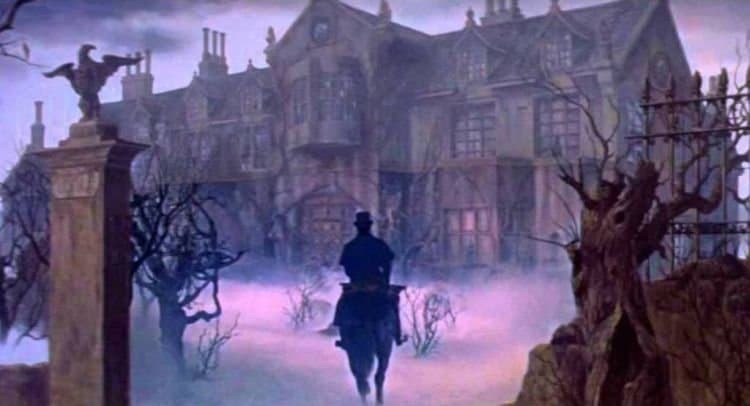★★★.5 out of ★★★★★
Directed by Roger Corman.
Since Netflix recently teased out a new Mike Flanagan series based upon Edgar Allen Poe’s haunting short story, the Fall of the House of Usher, we decided it was high time to jump in the way-back machine and give its 1960 forefather a discerning look. Turns out Flanagan may be on to something by following this chilling story.
By the late 1950s Roger Corman and American International Pictures had turned out nearly 70 (yes, you read that right, nearly 70) films. Mostly double feature trash (Bucket of Blood and Attack of the Giant Leeches, and The Headless Ghost and Horrors of the Black Museum) and largely all in black and white. Roger Corman and AIP decided it was time to embrace the new fandangled color aesthetic and put some serious cash into an AIP horror show.
Corman landed on Fall of the House of Usher — AKA House of Usher. The set design, actors, and glorious colors all come into sharp focus with this stellar production. Corman, AIP, and Edgar Allen Poe was a venture so successful that they would end up developing seven more films in the span of several years, including: The Pit and The Pendulum (1961), Tales of Terror (1962), Premature Burial (1962), The Raven (1963), The Haunted Palace (1963), The Masque of the Red Death (1964), and Tomb of Ligeia (1964).
House of Usher — the one that started it all — is a fairly faithful adaption to Poe’s seminal 1839 work following the madness of Roderick (Vincent Price) and his infirm sister Madeline (Myrna Fahey). The hunky Philip Winthrop (Mark Damon) becomes concerned with his fiancé’s maladies and decides to pay a visit to her family’s gothic — with a capital “G” — estate…The Usher House.
Phillip is immediately greeted with creepy atmospherics, odd and controlling behavior courtesy of Vincent Price, things that go bump in the night, and a distant and peculiar reception from his catalytic lady-friend, Madeline. Nothing is as it seems as Phillip wanders through the mansion trying to unearth the family’s deep, dark, and murky past.
The film’s set designs are amazing intricate and in one telling bit of exposition Roderick goes through the family’s horrible history by showing Phillip as series of gruesome portraits. Each has a chilling story to tell. Every member is beset by a cursed bloodline with problems ranging from lying and thievery to blasphemy, adultery, drug addiction, and MURDER.
Madeline eventually passes to the great beyond…or does she? Roderick entombs his ghostlike sister, but it’s clear she’s not dead, or rather she just might be undead. House of Usher ends with a gothic flourish, but the film is not really about the summit, it’s about the spooky journey that takes you to the altar of their collective madness.
Replete with exceptional amounts of fog, the aforementioned terrifying portraits, and a blood curdling dream sequence, House of Usher is a pretty darn effective horror show. Not to mention it’s got a great soundtrack courtesy of space age-exotica whizz, Les Baxter.
Granted our 21st century horror sensibilities may be too jaundiced and grizzled to get behind this spook show, but we’re here to tell you that House of the Usher is a bona fide part of the horror lexicon. It may not have the gore of Terrifier 2 or the frights of the Conjuring 3, but it’s got Vincent Price, and in our book that’s worth a trip down horror lane. For if you don’t know where you’re from…you’ll never know where you’re at.
House of Usher is probably a light PG by today’s standards and is available for streaming on Amazon.
OR! Truck on over to Shout Factory and pick up a DVD copy.


